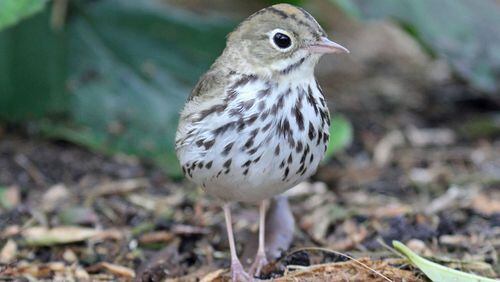April is prime migration time. Waves of songbirds in southern climes move northward from winter grounds to settle in their spring and summer nesting sites. Many of the migrants—warblers, tanagers and the like—nest in Georgia; others merely pass through on their way to nesting areas up north.
Nearly all of them migrate at night, when temperatures are cooler and there’s less danger from predators.
Even so, nighttime flying itself can be deadly for millions of birds because of a man-made hazard: bright city lights. Migrating birds often use stars as navigation cues, but as they pass over cities and towns, they can become disoriented by urban lights, especially those on high buildings and other structures directly in their paths.
Once they are disoriented, birds crash into buildings and windows. They may circle in confusion until they become exhausted and fall to the ground, becoming easy prey for predators and other threats. Millions of birds die each year because of this endangerment.
Dozens of migratory species are affected, such as wood thrushes, chimney swifts, ovenbirds and other warbler species.
To reduce birds colliding into buildings, the Atlanta Audubon Society has launched Lights Out Atlanta, a voluntary program encouraging businesses, agencies and homeowners to turn off or reduce lighting during migration periods. The periods include March 15-May 31 (spring) and August 15-November 15 (fall), between midnight and 6 a.m.
Lights Out also is a national effort, with dozens of other cities and towns across the nation turning off night lights to help migrating birds.
The City of Atlanta already has included four of its big buildings in the program; several commercial properties; and dozen of homeowners in metro Atlanta also are participating.
To learn how you can participate, visit: atlantaaudubon.org/lights-out-atlanta.
RELATED VIDEO:
IN THE SKY: From David Dundee, Tellus Science Museum astronomer: The Eta Aquarid meteor will be visible next week, reaching a peak of 60 meteors per hour at night on May 4 in the southeast from about 3 a.m. until dawn.
The moon will be first quarter on Tuesday. Mercury is low, and Venus and Mars are very low, in the west at dusk. Jupiter rises in the east at dusk. Saturn rises in the east just before midnight.
About the Author






